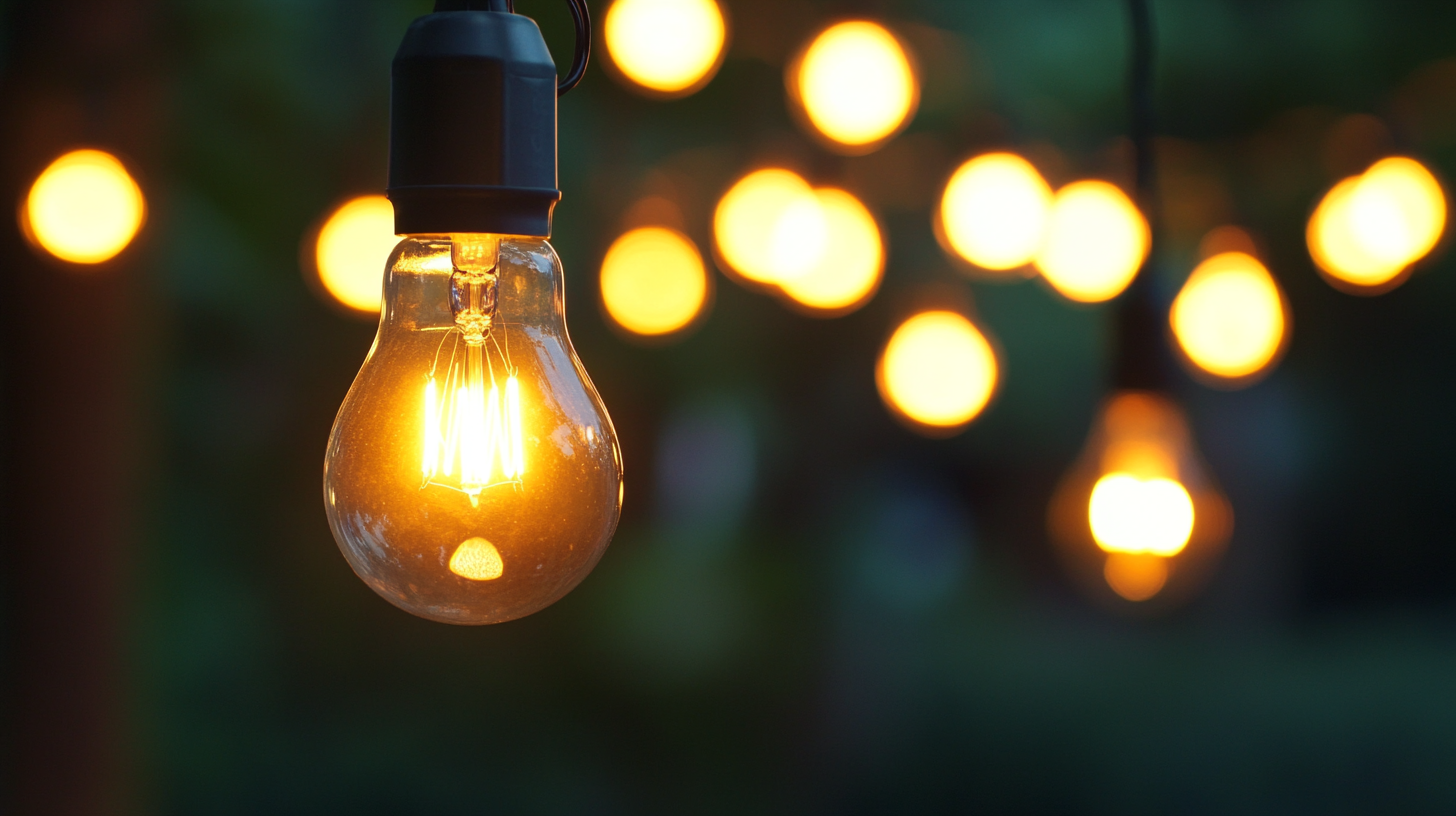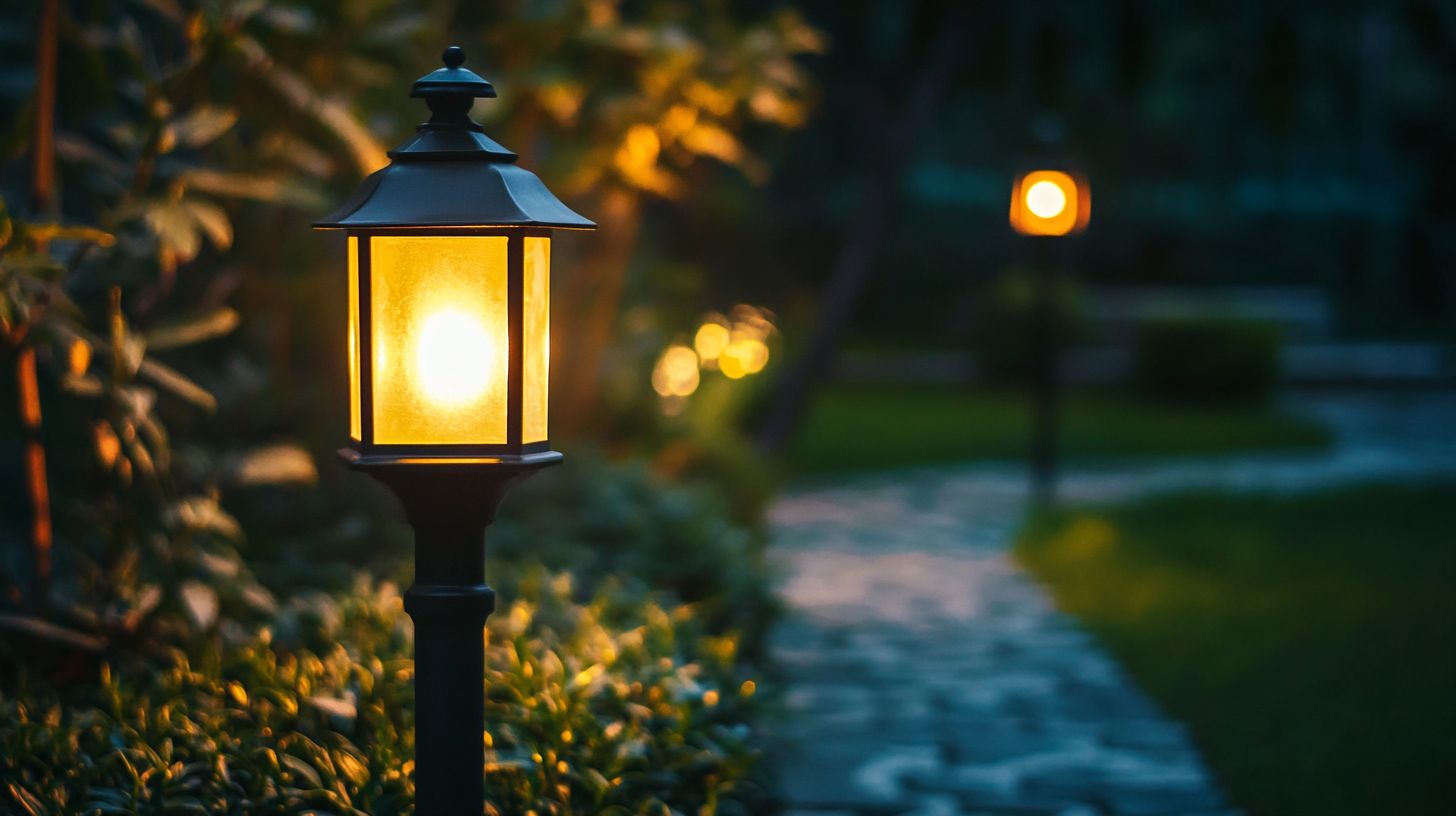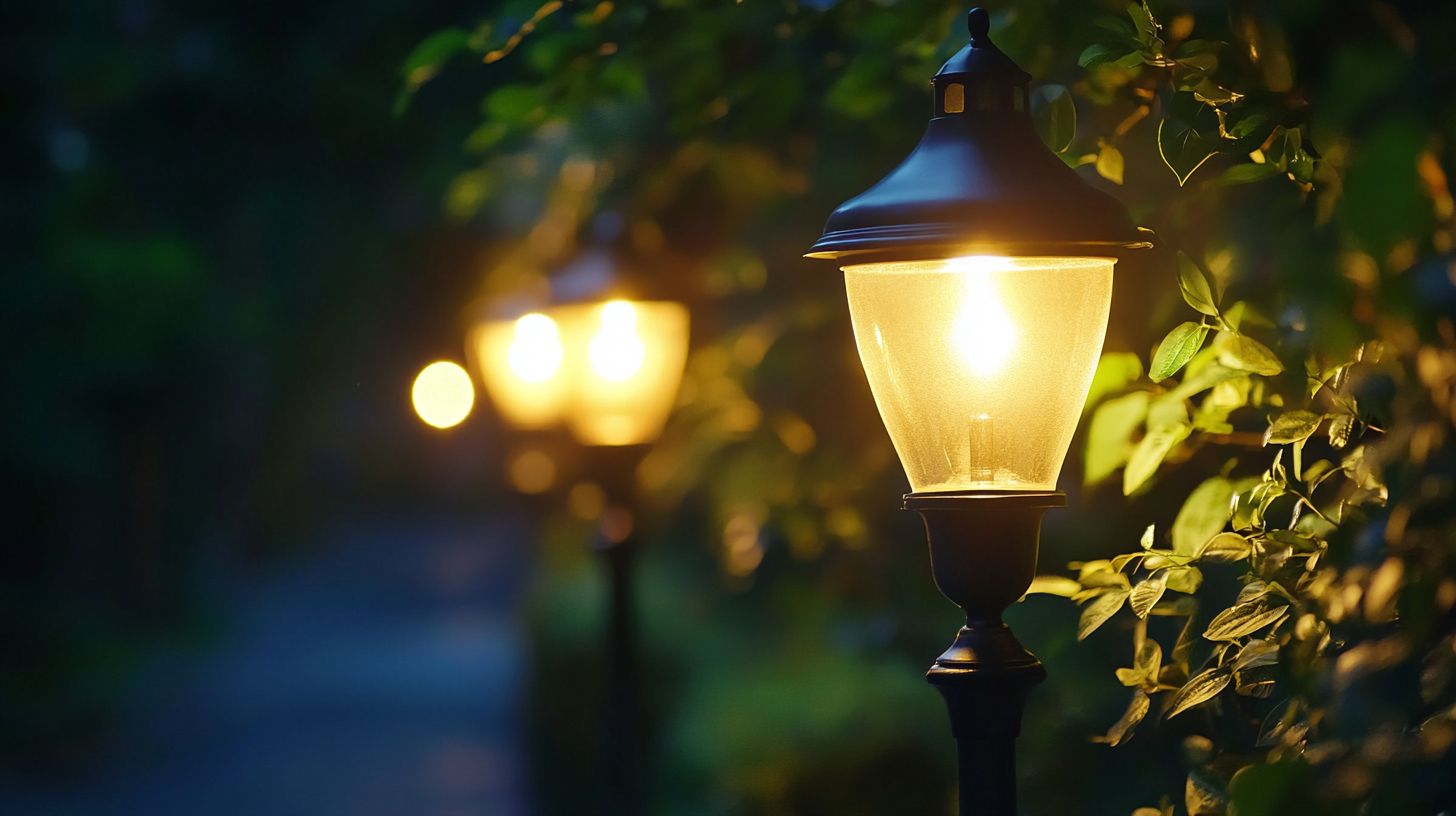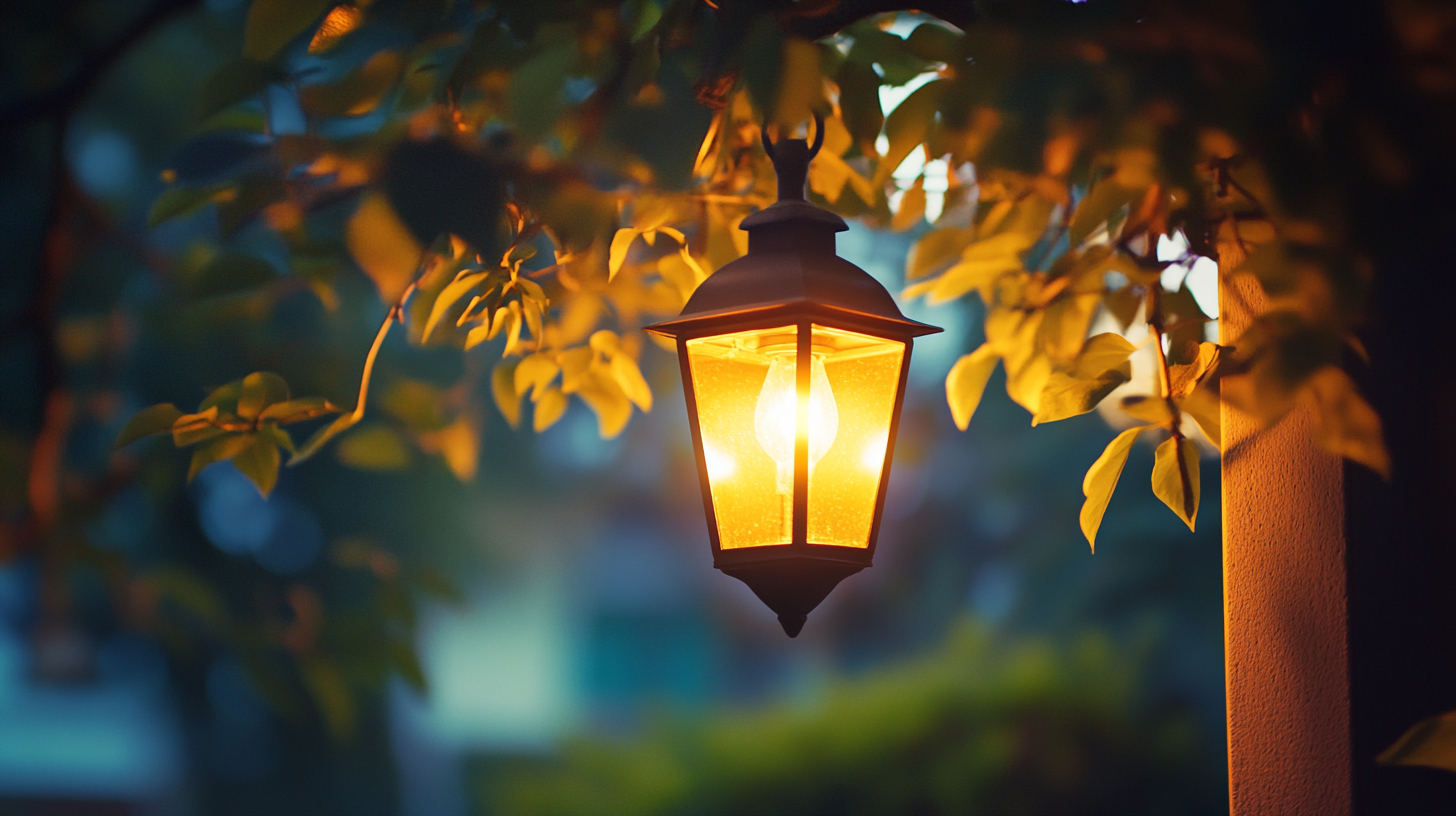7 Essential Insights for Choosing the Perfect Outdoor Lighting Solutions
In the realm of landscape design, the importance of Outdoor Lighting Solutions cannot be overstated. According to a recent report by the American Society of Landscape Architects, over 90% of surveyed professionals believe that effective outdoor lighting significantly enhances the appeal and functionality of outdoor spaces. Moreover, the global outdoor lighting market is expected to reach $30 billion by 2026, indicating a growing recognition of its role in residential and commercial environments. This surge is largely attributed to advancements in energy-efficient technologies and innovative design options that not only illuminate but also enhance security and aesthetics.
As property owners increasingly seek to extend their living spaces beyond the confines of their homes, investing in the right Outdoor Lighting Solutions has become a critical decision. Whether it’s for creating a welcoming atmosphere in a backyard, ensuring safety in pathways, or highlighting architectural features, the right lighting choices can transform an outdoor area into a captivating setting. This blog post explores seven essential insights to guide you through the process of selecting the perfect outdoor lighting solutions, ensuring that your choices blend functionality with visual appeal while staying within your budget.

Understanding Different Types of Outdoor Lighting Fixtures
When selecting outdoor lighting fixtures, understanding the various types available is crucial to creating an aesthetically pleasing and functional outdoor space. The most common categories of outdoor lighting include ambient, task, and accent lighting, each serving unique purposes. According to the American Lighting Association, 60% of homeowners prioritize ambiance when designing their outdoor areas, indicating a strong preference for fixtures that provide a warm, inviting glow. Ambient lighting fixtures, such as wall-mounted sconces or post lights, are essential for illuminating larger areas. Task lighting, such as pathway lights, ensures safe navigation through outdoor spaces. A study by the National Park Service found that well-lit pathways can reduce accidents by up to 40%, underscoring the importance of functional lighting in outdoor design. Accent lighting, on the other hand, can highlight architectural features or landscape elements, adding depth and interest to your surroundings. Additionally, LED technology has revolutionized outdoor lighting solutions. According to a report by the U.S. Department of Energy, LEDs consume up to 75% less energy than traditional incandescent bulbs and last 25 times longer. This efficiency not only benefits the environment but also reduces long-term maintenance costs. Homeowners should consider these energy-efficient options when selecting outdoor fixtures, as they can significantly influence both the aesthetics and sustainability of outdoor spaces.

Assessing Your Outdoor Space and Lighting Needs
When it comes to maximizing your outdoor space, selecting the right lighting solution is essential. Understanding your unique outdoor environment and lighting needs will help you create a space that is both functional and inviting. Begin by assessing the specific areas you want to illuminate. Whether it's your patio, garden, or pathway, consider how these spaces are used during the day and night. For instance, a cozy seating area may benefit from softer lighting, while pathways require brighter, focused lights for safety.
With the latest advancements in outdoor lighting, products like the new 36-inch Mijia fan lamp blend functionality with style, making them excellent options for outdoor settings. These innovative fixtures not only provide illumination but can also enhance airflow, creating a more comfortable atmosphere. As you evaluate your lighting needs, think about the balance between aesthetics and practicality. Choosing fixtures that align with the design of your outdoor space while meeting your illumination requirements is key for a harmonious environment.
Lastly, consider energy efficiency when selecting your outdoor lighting. Modern solutions often incorporate LED technology, which offers durability and lower energy consumption. This means you can enjoy your outdoor spaces longer without the worry of high energy bills. By combining the right products, thoughtful placement, and energy-efficient solutions, you can transform your outdoor area into a beautifully lit haven.

Energy Efficiency: Choosing Eco-Friendly Lighting Options
When selecting outdoor lighting solutions, energy efficiency should be a paramount consideration. With the rise of environmental awareness, eco-friendly lighting options not only reduce energy consumption but also lower utility bills. According to the U.S. Department of Energy, using LED outdoor lights can save homeowners about 75% on lighting costs compared to traditional incandescent bulbs, while also lasting up to 25 times longer.
Solar-powered lights have gained popularity as an eco-friendly alternative. They harness sunlight during the day, which translates into free energy for nighttime illumination. A report by the National Renewable Energy Laboratory highlights that solar lighting systems can reduce grid electricity usage, contributing to a significant decrease in carbon emissions over time. Additionally, the adaptability of solar lights makes them suitable for various landscapes, whether illuminating pathways or highlighting garden features.
Beyond LEDs and solar options, consider smart lighting systems that optimize energy use. Intelligent controls allow for automation based on the time of day or presence detection, ensuring lights are only used when needed. Research from the Lighting Research Center indicates that smart outdoor lighting can reduce energy consumption by over 30%, adding another layer of savings and sustainability to outdoor environments. Making informed, energy-efficient choices not only enhances outdoor aesthetics but also supports a commitment to a greener planet.

Designing a Layered Lighting Plan for Impact and Functionality
Designing a layered outdoor lighting plan is crucial for creating an inviting and functional space. According to the International Association of Lighting Designers, effective outdoor lighting should employ three distinct layers: ambient, task, and accent lighting. Ambient lighting serves as the foundation, providing general illumination that enhances visibility and safety. Task lighting, on the other hand, is directed towards specific areas, such as outdoor kitchens or seating areas, ensuring that every corner is functional and usable even after sunset.
Recent trends indicate that homeowners are prioritizing aesthetics alongside energy efficiency in their outdoor lighting choices. A report from the American Lighting Association highlights that LED technology has become a favorite due to its lower energy consumption and longer lifespan. With advancements in smart lighting solutions, homeowners can now customize their lighting schemes and control them remotely, adding versatility to their outdoor settings. For instance, integrating motion sensors offers not only convenience but significantly enhances security by illuminating pathways and driveways only when needed.
As cities like Beijing invest in developing their urban environments, outdoor lighting plays a pivotal role in urban planning and safety. The “14th Five-Year Plan for Urban Transportation Development” underscores the importance of well-lit public spaces in encouraging pedestrian movement and fostering community interactions. This macro perspective reinforces the idea that a thoughtfully designed layered lighting plan can greatly enhance both residential and public areas, improving usability and aesthetics alike. Thus, investing in quality outdoor lighting is increasingly seen as not just an enhancement but a necessity in modern urban design.
Tips for Maintenance and Seasonal Adjustments of Outdoor Lights
Choosing the right outdoor lighting goes beyond aesthetics; it's also about maintenance and adaptability throughout the seasons. According to the American Lighting Association, proper maintenance can extend the lifespan of outdoor lighting fixtures by up to 50%. Regular checks and cleanings can prevent buildup of dirt and debris, which may cause fixtures to dim or malfunction over time. This proactive approach ensures that your investment continues to shine brightly year after year.
Seasonal adjustments are another crucial aspect of outdoor lighting that many homeowners overlook. As cited in the 2021 National Association of Home Builders report, a significant percentage of homeowners (around 60%) change their outdoor settings to reflect the seasons. This includes adjusting timers and dimmers to account for daylight savings time and changing weather conditions. Installing smart lighting solutions can streamline this process, allowing users to control their outdoor illumination remotely, optimizing energy efficiency and enhancing safety during darker months.
In addition to these practices, it's essential to consider the type of bulbs used in outdoor lighting. LED lights are increasingly popular, as a recent survey by the U.S. Department of Energy reported that LEDs use at least 75% less energy and last 25 times longer than incandescent lighting. This makes them a sustainable choice that requires less frequent replacements, further reducing the maintenance burden. Thus, implementing a strategic maintenance plan and making seasonal adjustments can lead to an efficient, beautiful outdoor lighting system that stands the test of time.

